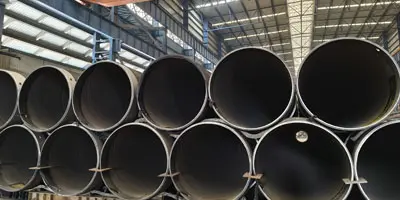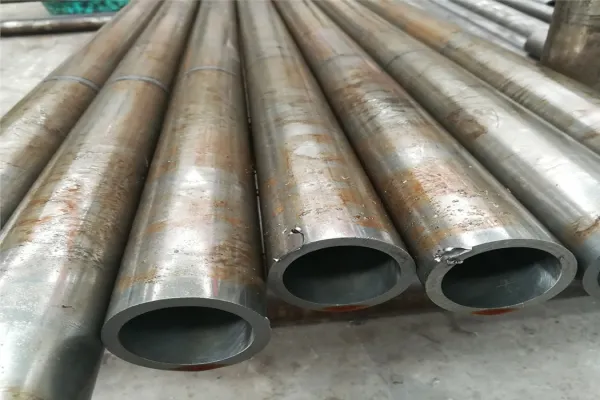What is precision steel pipe?
Precision steel pipes are cold drawn or hot rolled, and have high precision and excellent mechanical properties. The inner and outer walls are smooth and free of oxide layer, and can withstand high pressure without leakage, are not easy to deform, and are not easy to crack when expanded or flattened. Due to these characteristics, precision steel pipes are widely used in the manufacture of pneumatic or hydraulic components such as cylinders and oil cylinders, and can be produced by seamless or welding processes.
Production process of precision steel pipe
The raw material of precision tube is round tube billet, which is cut into billet with a length of about 1 meter by cutting machine and sent to furnace for heating by conveyor belt. The billet is sent to furnace for heating at a temperature of about 1200 degrees Celsius. The fuel is hydrogen or acetylene. The temperature control in the furnace is the key issue. After the round tube billet is taken out of the furnace, it is pierced by pressure punching machine. Generally, the more common punching machine is conical roller punching machine, which has high production efficiency, good product quality, large punching diameter expansion, and can punch a variety of steel types. After punching, the round tube billet is successively rolled by three rollers, continuous rolling or extruded. After extrusion, it is removed from the tube and sized. The sizing machine uses a conical drill bit to rotate at high speed into the steel billet to punch holes to form a precision tube.
The inner diameter of the precision tube is determined by the outer diameter length of the drill bit of the sizing machine. After sizing, the national standard precision tube enters the cooling tower and is cooled by water spray. After cooling, the precision tube is straightened. After straightening, the precision tube is sent to the metal flaw detector (or water pressure test) by the conveyor belt for internal flaw detection. If there are cracks, bubbles and other problems inside the precision tube, they will be detected. After quality inspection, the precision tube must also pass strict manual selection. After quality inspection, the precision tube is sprayed with paint, specifications, production batch number, etc., and hoisted into the warehouse by a crane.
Several points should be noted in the quality requirements of precision steel tube production:
1. Dimensional accuracy and appearance The geometric dimensions of precision tubes mainly include the outer diameter, wall thickness, ovality, length, curvature, tube end face bevel, groove angle and blunt edge of the steel tube, and the cross-sectional dimensions of the heterogeneous steel tube;
2. The surface quality standard stipulates the "surface smoothness" requirements of precision tubes. Common defects include: cracks, hairlines, inner folds, outer folds, rolling, inner straights, outer straights, delamination, scars, pits, convex hulls, pits (pitted surfaces), scratches (scratches), inner spirals, outer spirals, blue lines, concave correction, roller marks, etc. Among them, cracks, inner folds, outer folds, rolling, delamination, scars, pits, convex hulls and other dangerous defects; the pockmarks, blue lines, scratches, slight inner and outer straights, slight inner and outer spirals, concave correction, and roller marks of steel pipes are general defects;
3. Physical and chemical properties include mechanical properties at room temperature and mechanical properties at a certain temperature (thermal strength and low temperature properties) and corrosion resistance (such as oxidation resistance, water erosion resistance, acid and alkali resistance, etc.) generally depend on the chemical composition, organizational properties and purity of steel and heat treatment methods of steel.
Cold-drawn seamless precision steel pipes are divided into many categories, which are specifically classified for everyone:
1. Seamless steel pipes can be divided into hot-rolled pipes, cold-rolled pipes, cold-drawn pipes, extruded pipes, etc. according to different production methods.
2. According to the shape, there are round pipes and special-shaped pipes. In addition to square pipes and rectangular pipes, special-shaped pipes also include elliptical pipes, semicircular pipes, triangular pipes, hexagonal pipes, convex pipes, plum blossom pipes, etc.
3. According to different materials, it can be divided into ordinary carbon structural pipes, low alloy structural pipes, high-quality carbon structural pipes, alloy structural pipes, stainless pipes, etc.
4. According to special purposes, there are
boiler pipes, geological pipes, petroleum pipes, etc.






 English
English Español
Español بالعربية
بالعربية











 Phone :
Phone :  Whatsapp :
Whatsapp :  Email :
Email : 


